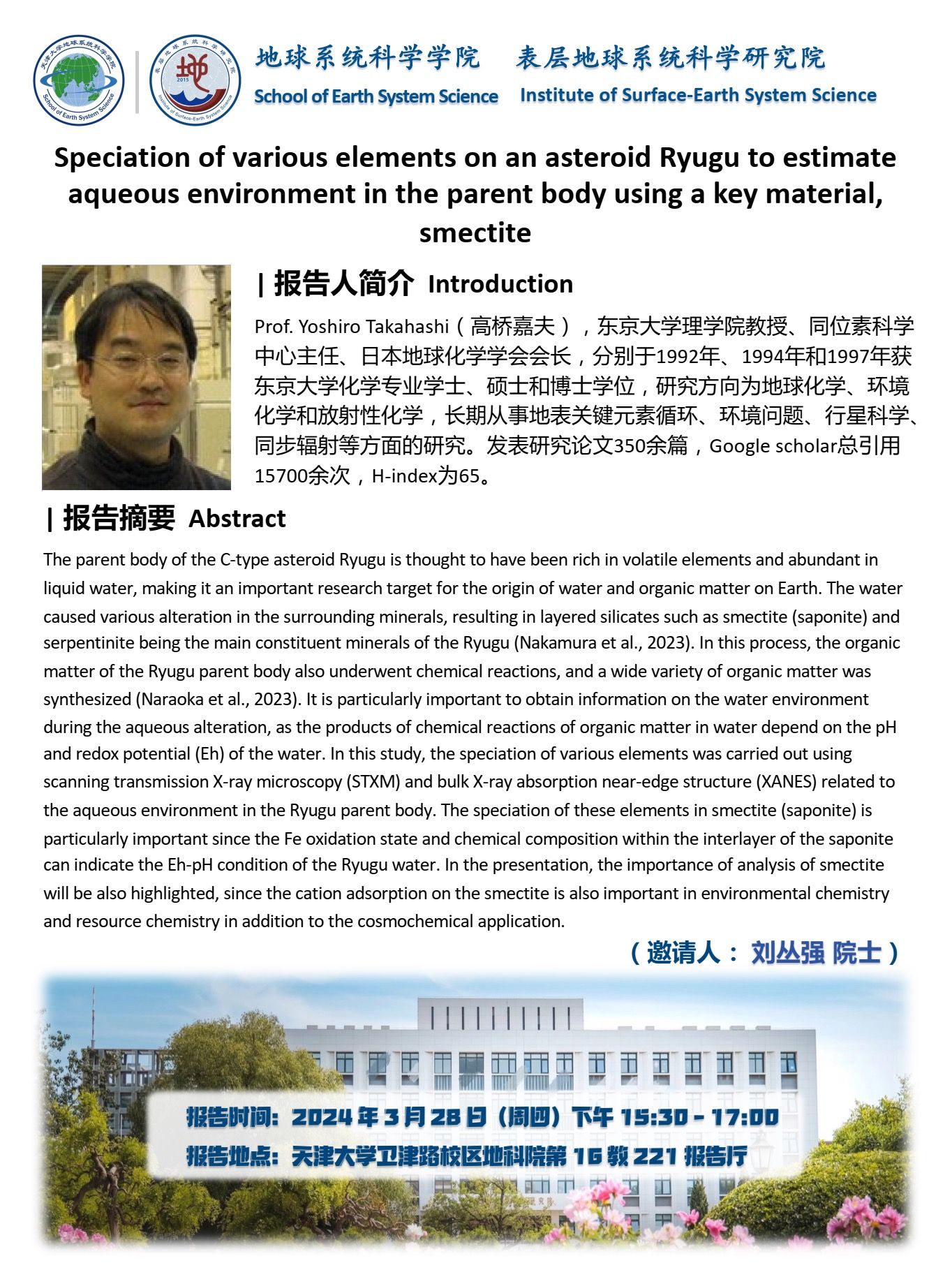Time: 15:30-17:00, March 28 (Thursday)
Venue: Lecture Hall 221, Building No. 16
Speaker: Prof. Yoshiro Takahashi from The University of Tokyo
Professor Yoshiro Takahashi is the Director of the Isotope Science Center at the Faculty of Science, The University of Tokyo, and the President of the Geochemical Society of Japan. He obtained his Bachelor's, Master's, and Doctoral degrees in Chemistry from the University of Tokyo in 1992, 1994, and 1997, respectively. His research focuses on geochemistry, environmental chemistry, and radiochemistry, and he has long been engaged in research on key element cycling in Earth's surface reservoirs, environmental issues, planetary science, synchrotron radiation, and more. He has published over 350 research papers, with over 15700 citations from Google Scholar and an H-index of 65.
Abstract: The parent body of the C-type asteroid Ryugu is thought to have been rich in volatile elements and abundant in liquid water, making it an important research target for the origin of water and organic matter on Earth. The water caused various alteration in the surrounding minerals, resulting in layered silicates such as smectite (saponite) and serpentinite being the main constituent minerals of the Ryugu (Nakamura et al., 2023). In this process, the organic matter of the Ryugu parent body also underwent chemical reactions, and a wide variety of organic matter was synthesized (Naraoka et al., 2023). It is particularly important to obtain information on the water environment during the aqueous alteration, as the products of chemical reactions of organic matter in water depend on the pH and redox potential (Eh) of the water. In this study, the speciation of various elements was carried out using scanning transmission X-ray microscopy (STXM) and bulk X-ray absorption near-edge structure (XANES) related to the aqueous environment in the Ryugu parent body. The speciation of these elements in smectite (saponite) is particularly important since the Fe oxidation state and chemical composition within the interlayer of the saponite can indicate the Eh-pH condition of the Ryugu water. In the presentation, the importance of analysis of smectite will be also highlighted, since the cation adsorption on the smectite is also important in environmental chemistry and resource chemistry in addition to the cosmochemical application.
